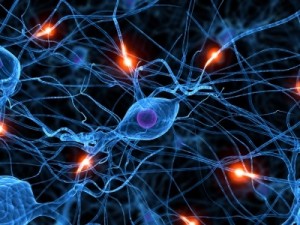To Harness Neuroplasticity, Start with Enthusiasm
 We are the architects and builders of our own brains.
We are the architects and builders of our own brains.
For millennia, however, we were oblivious to our enormous creative capabilities. We had no idea that our brains were changing in response to our actions and attitudes, every day of our lives. So we unconsciously and randomly shaped our brains and our latter years because we believed we had an immutable brain that was at the mercy of our genes.
Nothing could be further from the truth.
The human brain is continually altering its structure, cell number, circuitry and chemistry as a direct result of everything we do, experience, think and believe. This is called “neuroplasticity”. Neuroplasticity comes from two words: neuron or nerve cell and plastic, meaning malleable or able to be molded.
The implications of neuroplasticity are enormous: we have the ability to keep our brains sharp, effective and capable of learning new skills well into our 90s, if we protect our brains from damaging habits and give them ongoing stimulation and appropriate fuel. One way to illustrate this is to think of the brain and mind as a large boat, complete with captain and crew, sailing the ocean blue.
The captain makes the decisions and gives the orders, which the loyal crew follow. Without a captain, the boat would be directionless. Without a crew, the day-to-day running of the boat would be impossible. The crew know their role and don’t need the captain to tell them how to do their job or to remind them of their job on a daily basis. They’re very well trained. The captain only notifies the crew if he or she wants something to change and takes charge whenever leadership is required. As for the boat, it needs to be kept in good nick and fuelled on a regular basis.
The captain, the crew and the boat form a single, interdependent unit, each party influencing the other two. If the captain and crew don’t do their job properly, the boat can get damaged and end up in disrepair. If the boat is damaged, the journey is more arduous; in particular, rough seas are more difficult to handle. If the captain is apathetic, incompetent or drunk, there is an absence of leadership. And if the captain and crew are in constant disagreement, they won’t get very far.
How does this relate to the brain and mind? The captain represents the conscious mind; the crew represent the subconscious mind; the boat is the brain; and the ocean is life.
The conscious mind is the thinking part of ourselves. It sets goals, makes decisions and interprets experiences. The subconscious mind is the part of ourselves beneath our conscious awareness that keeps us alive and running. It’s what keeps our hearts pumping, our lungs expanding and our hair growing. We don’t consciously say to ourselves, “Pump, breathe, grow!”—these things are handled subconsciously, through the autonomic nervous system. The number one priority of the subconscious mind is our survival: physical, emotional and psychological. This is why our subconscious plays a powerful role in dictating behaviour. It prioritises our emotional wellbeing over our conscious wants. It’s why sometimes we consciously think we want one thing, but still end up doing another. One reason that diets don’t work is they don’t address subconscious issues that may be at play. We always sabotage our efforts if the subconscious pay-offs for not changing override the conscious desire to lose weight. Finally, the brain is the vessel through which our conscious and subconscious minds operate.
Based on the analogy of boat, captain and crew, the following is an overview of how we can boost our brains.
1. Don’t damage the boat.
On day one in medical school, I was taught Primum non nocere—“First do no harm”. No boat owner would knowingly damage their boat, so it follows that no human would knowingly damage his brain. Apart from the obvious injury caused by falling off ladders and falling into illegal drugs, things which harm the brain and reduce our cognitive abilities include smoking, stress, sleep deprivation, soft drinks, sedentary lifestyles, excessive alcohol, junk food, high blood pressure, high cholesterol levels, obesity, loneliness, pessimism and negative self-talk. Goal number one is to avoid these damaging entities.
2. Dock the boat in stimulating surroundings.
Our brain function improves in every measurable way when we find ourselves in environments that are mentally, physically and socially stimulating. Adventure prevents dementia!



So true!! This is what we practice with our students every day at Eaton Arrowsmith School in Vancouver, Victoria and soon to be Surrey, BC, Canada. By strengthening their capacity to learn, as opposed to accommodating for their learning weaknesses, our students are building stronger and tighter cognitive ships…which will lead them on a far more independently run journey throughout life!
Great analogy! It really ties everything together nicely. It’s interesting too, if you combine everything we are told to do to stay physically healthy with the things we are told to do to be happy, you basically get a healthy brain.
Bottom line, exercise and be happy and your brain will work really well even when you are old!